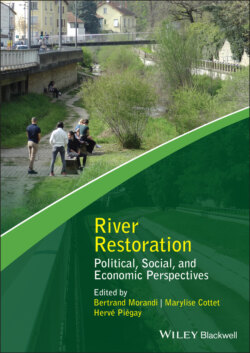Читать книгу River Restoration - Группа авторов - Страница 48
2.4 Conclusions
ОглавлениеIf we are to see river restoration not simply as a technical endeavor theorized by the applied science of restoration ecology but rather as itself an activity to which questions of ethics are central then we must engage with environmental ethics. But discussions of restoration in environmental ethics often presuppose a vision of ecological restoration – the restoration of a clearly delimited portion of wilderness – that is of little relevance to typical cases of river restoration. Taking various significant attributes of river restoration into account, it further becomes clear that successful river restoration will ultimately depend not just on restoration work itself but also on the transformation of human activity present in the surrounding watershed. For the most part, however, theorists of river restoration have concentrated only on activities that belong within the clear rubric of restoration and so have not adequately considered the necessity for a broader environmental ethic that extends to such fundamental human activities as farming, industrial production, and the planning and design of cities, all of which significantly affect the character of rivers. This broader ethic, the basic principle of which is to take nature as measure, may be found in biomimicry, understood as an organizing concept capable of bringing together and providing a basic theoretical framework for a wide range of human activities, ecological restoration included, thus resolving the fundamental problems present in preservationism, restorationism, and ANT, while also lending itself to articulation with certain non‐Western philosophical traditions, notably Daoism.
As far as policy is concerned, the principal recommendation that follows from the position presented in this chapter is that river restoration should not be seen as an isolated and self‐contained activity but rather as a part of a broader systemic change, one that embraces the “Biomimicry Revolution” proposed by Benyus (1997, p. 2), and, in so doing, adopts the new environmental paradigm of imitationism. This approach would both require and facilitate collaborations among a wider range of stakeholders than is typically the case when river restoration is seen as an isolated activity cut off from what takes place in other areas of the river basin.
A second important policy recommendation concerns the need to articulate the ecological standards that derive from nature with other standards deriving from both interhuman ethical constraints (justice, participation, etc.) and contingent human demands and aspirations. Applied to river restoration, this means that, while there should be broad acceptance of the need to derive ecological standards from nature, in this instance the river (and its surrounding watershed) in something like its natural state, these standards must be articulated with other standards – social, economic, etc. – that derive from its present human inhabitants. If done intelligently, this will not necessarily involve a clash of standards and values, as is the case when preservationists lament human activity in general for its negative consequences on natural value, for respecting nature’s standards would not only constrain but also enable the attainment of other specifically human standards, as exemplified by the ancient Dujiangyang irrigation scheme in China, which, in imitating natural flood patterns, allowed that floodplain to become “the richest agricultural area in China” (Mathews 2019, p. 35).
